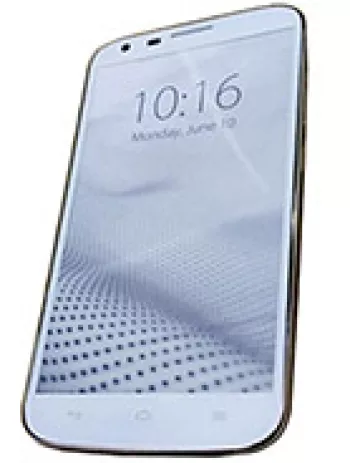
Overview
The Huawei Ascend Y200 is a smartphone that was initially launched in May 2012. As a product of Huawei Technologies, a leading global provider of information and communications technology infrastructure and smart devices, the Ascend Y200 was marketed as an affordable entry-level smartphone, catering especially to those who were newly exploring the world of smartphones. Although it has been discontinued, this device serves as a representation of the evolving technology and market demands of its time.
Design and Build
Weighing at 120 grams and with dimensions of 116.9 x 60.4 x 11.7 mm, the Huawei Ascend Y200 is compact and fits comfortably in the palm of the hand. Its body is primarily plastic, which aids in maintaining a lightweight structure. The design features a Mini-SIM card slot, housed under a removable back panel that also conceals the battery compartment. The build quality, though simple, reflects durability suitable for everyday use at the price point.
Display
Utilizing an IPS LCD display, the Huawei Ascend Y200 offers 256K colors and a resolution of 320 x 480 pixels over a 3.5-inch screen. This results in a pixel density of about 165 ppi. While not groundbreaking by modern standards, the display was competitive for entry-level smartphones during its release period, providing adequate brightness and color reproduction for basic usage such as messaging and browsing.
Performance
Under the hood, the Ascend Y200 is powered by a Qualcomm MSM7225A Snapdragon S1 chipset, with an 800 MHz Cortex-A5 CPU and an Adreno 200 GPU. This configuration provides sufficient power for fundamental smartphone operations and light applications. With 256MB of RAM and 512MB of internal storage, complemented by a microSDHC card slot for expandable storage, the device manages several basic applications and multitask to a limited extent.
Camera
The device features a single 3.15 MP main camera which is capable of recording 480p video at 30fps. There is no front-facing selfie camera, a common feature for budget phones from its era. The camera performance is pragmatic, catering to those seeking functionality without the need for high-resolution photography.
Battery
The Ascend Y200 houses a removable Li-Ion battery with a capacity of either 1250 or 1400 mAh. It stands by for up to 220 hours, with talk time extending up to 4 hours over 3G networks. Such battery specifications provided users with adequate power for basic daily tasks within the smartphone's intended capabilities.
Software
Running Android 2.3 Gingerbread, the Huawei Ascend Y200 offers features characteristic of early Android operating systems, such as multi-touch input, accelerometer sensors for auto-rotate, and an intuitive user interface. Although no longer supported or updated, this OS version allowed users to download and install numerous applications from the Android marketplace, advancing smartphone accessibility at lower price points.
Networking and Connectivity
Supporting GSM and HSPA technologies, the Ascend Y200 enables 2G and 3G network connections, facilitating communication and basic internet browsing capabilities. The smartphone reaches data speeds of HSPA 7.2/5.76 Mbps. In terms of connectivity, it includes Wi-Fi 802.11 b/g/n with the ability for Wi-Fi Direct connections, Bluetooth 2.1 with A2DP, GPS with A-GPS for navigation, and a microUSB 2.0 port for charging and data transfer. An optional NFC feature was available, alongside FM radio for additional entertainment options.
Audio and Other Features
For sound, the phone incorporates stereo loudspeakers and includes a 3.5mm audio jack for headphone connectivity. The device also integrates essential sensors such as an accelerometer, proximity sensor, and compass, enhancing user interaction and functionality.
Market and Pricing
At launch, the Huawei Ascend Y200 was available in black, with an approximate price tag of 110 EUR. Geared towards budget-conscious consumers and those entering the smartphone market for the first time, the device presented a cost-effective introduction to smartphone ownership without compromising usability.
Conclusion
The Huawei Ascend Y200 serves as a landmark in the progression of affordable smartphones, offering essential features and performance for its time. While it may not rival modern smartphones in terms of performance and features, it catered effectively to a specific market segment seeking a low-cost, functional mobile device. Its existence is a testament to Huawei's commitment to making technology accessible to a broader audience, laying the groundwork for subsequent advancements in the mobile technology sphere.
Key Features of Huawei Ascend Y200
- Network technology supports GSM / HSPA with speeds up to 7.2/5.76 Mbps.
- Compact body with dimensions of 116.9 x 60.4 x 11.7 mm and lightweight at 120 g.
- IPS LCD display with 256K colors, 3.5 inches in size, and a resolution of 320 x 480 pixels.
- Powered by Android 2.3 (Gingerbread) OS and Qualcomm MSM7225A Snapdragon S1 chipset.
- Includes a dedicated microSDHC card slot for expandable memory.
- Main 3.15 MP camera with video recording at 480p@30fps.
- Equipped with stereo speakers and a 3.5mm headphone jack for audio.
- Connectivity options include Wi-Fi 802.11 b/g/n, Bluetooth 2.1, GPS, and optional NFC.
- FM radio available for additional entertainment.
- Comes with a removable Li-Ion battery offering up to 4 hours of talk time on 3G.
Drawbacks of Huawei Ascend Y200
- Discontinued model, hence no official support or updates available.
- Low screen resolution of 320 x 480 pixels, resulting in low display sharpness (165 ppi density).
- Powered by outdated Android 2.3 (Gingerbread) operating system.
- Limited processing power with an 800 MHz Cortex-A5 CPU.
- Very low internal memory of 256MB RAM and 512MB storage, restricting modern app usage.
- Only a single 3.15 MP main camera with basic video recording capabilities (480p@30fps), no selfie camera.
- Short battery life with a removable Li-Ion battery (1250/1400 mAh), offering only up to 4 hours of talk time.
- Lacks LTE support, only compatible with older GSM / HSPA networks.
- Mini-SIM slot instead of the more modern micro-SIM or nano-SIM slots.
- Optional NFC, not standard.

View Also
More Phones
All Rights Reserved +14268 Phones © Mobilawy 2025

























